Categories:
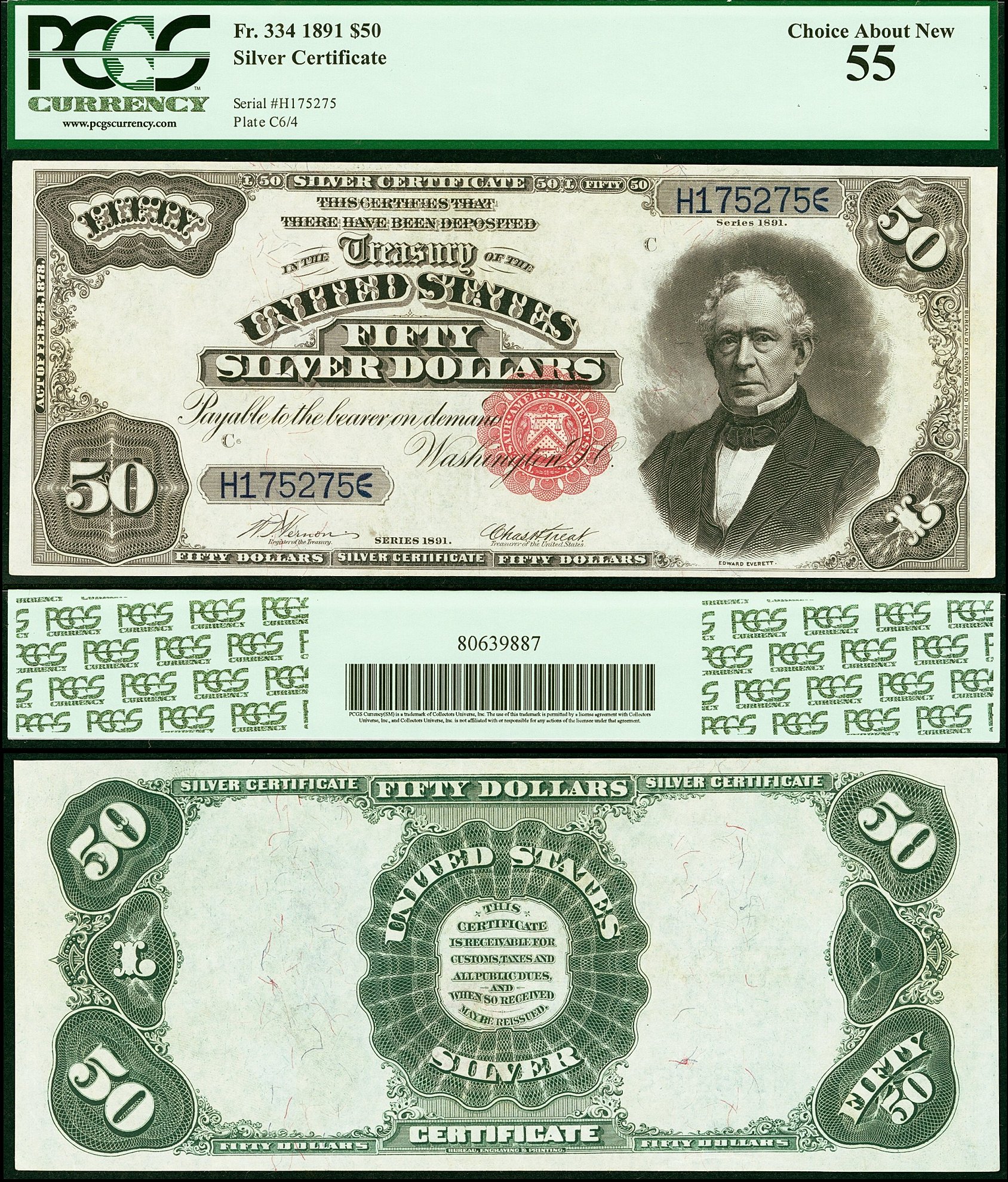
S/N H175275 Everett Note Only 49 Known in the Census! A mere 200,000 1891 $50 Silver Certificates with the Vernon-Treat signature combination were printed. About Edward Everett (April 11, 1794 – January 15, 1865) was an American politician, pastor, educator, diplomat, and renowned orator from Massachusetts. Here are some highlights of his life and career: Early Life and Education: Born in Dorchester, Massachusetts, Everett graduated from Harvard University at the age of 17. He later earned a Ph.D. from the University of Göttingen in Germany. Political Career: Everett served as a U.S. representative (1825–1835), governor of Massachusetts (1836–1840), U.S. minister to Great Britain (1841–1845), and U.S. secretary of state (1852). Educator and Orator: He was president of Harvard University (1846–1848) and is remembered for his extensive speaking career. He delivered a two-hour speech at the Gettysburg National Cemetery dedication in 1863, just before President Abraham Lincoln's famous two-minute Gettysburg Address. Support for Mount Vernon: Everett played a significant role in raising funds to preserve George Washington's Mount Vernon estate. Everett's contributions spanned politics, education, and public speaking, making him a notable figure in American history.
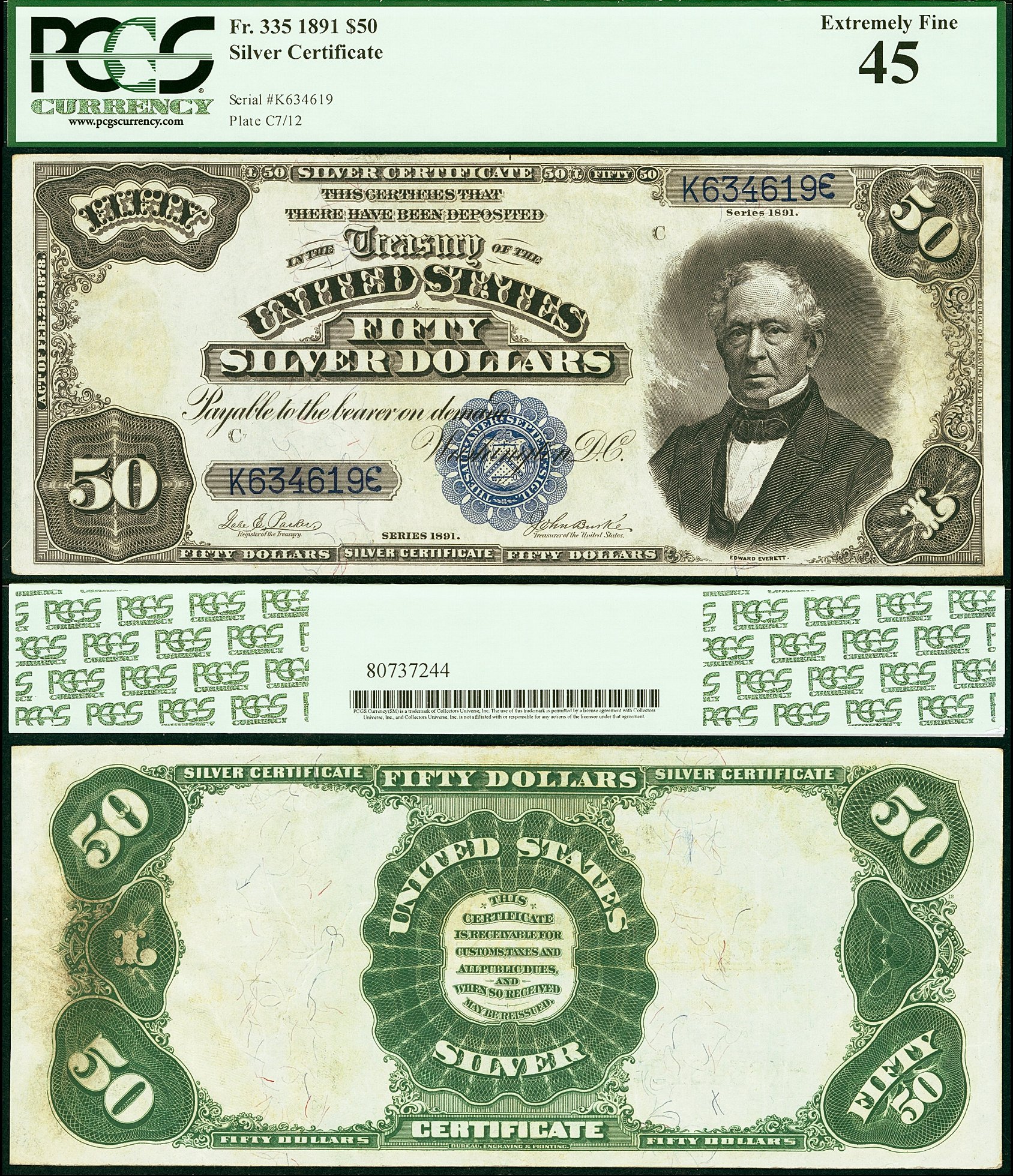
S/N K634619 Everett Note Census Shows 222 Known About Edward Everett (April 11, 1794 – January 15, 1865) was an American politician, pastor, educator, diplomat, and renowned orator from Massachusetts. Here are some highlights of his life and career: Early Life and Education: Born in Dorchester, Massachusetts, Everett graduated from Harvard University at the age of 17. He later earned a Ph.D. from the University of Göttingen in Germany. Political Career: Everett served as a U.S. representative (1825–1835), governor of Massachusetts (1836–1840), U.S. minister to Great Britain (1841–1845), and U.S. secretary of state (1852). Educator and Orator: He was president of Harvard University (1846–1848) and is remembered for his extensive speaking career. He delivered a two-hour speech at the Gettysburg National Cemetery dedication in 1863, just before President Abraham Lincoln's famous two-minute Gettysburg Address. Support for Mount Vernon: Everett played a significant role in raising funds to preserve George Washington's Mount Vernon estate. Everett's contributions spanned politics, education, and public speaking, making him a notable figure in American history.
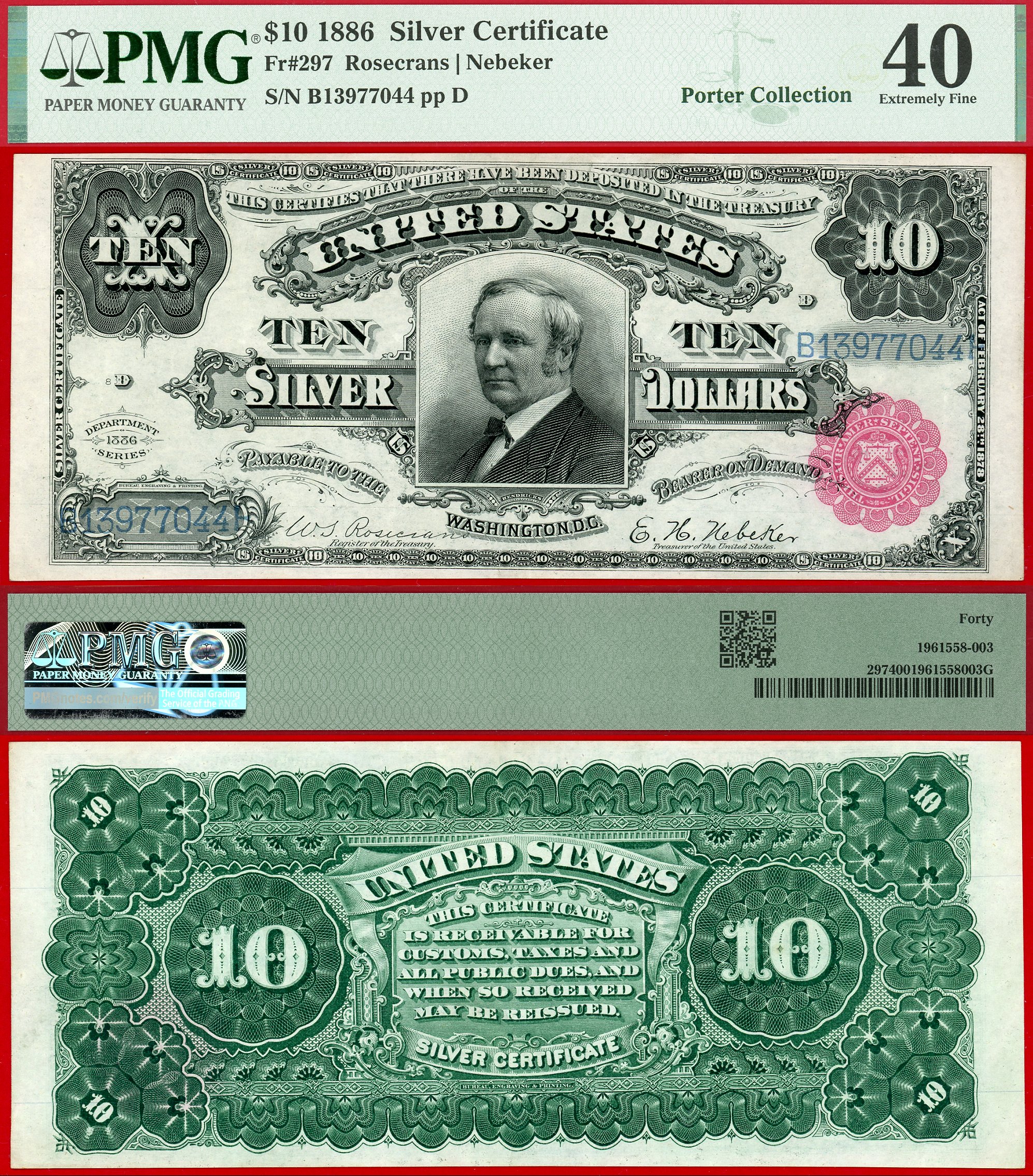
S/N B13977044 Tombstone Note is by a huge margin the rarest of the $10 Silver Certificates, with the census showing a mere 16 examples in all grades combined. One of those select few is locked away within the ANA’s museum. This is one of those 16 recorded and is a pleasing, moderately circulated piece with light honest wear. It exhibits attractive color for the Extremely Fine grade and solid margins all around.
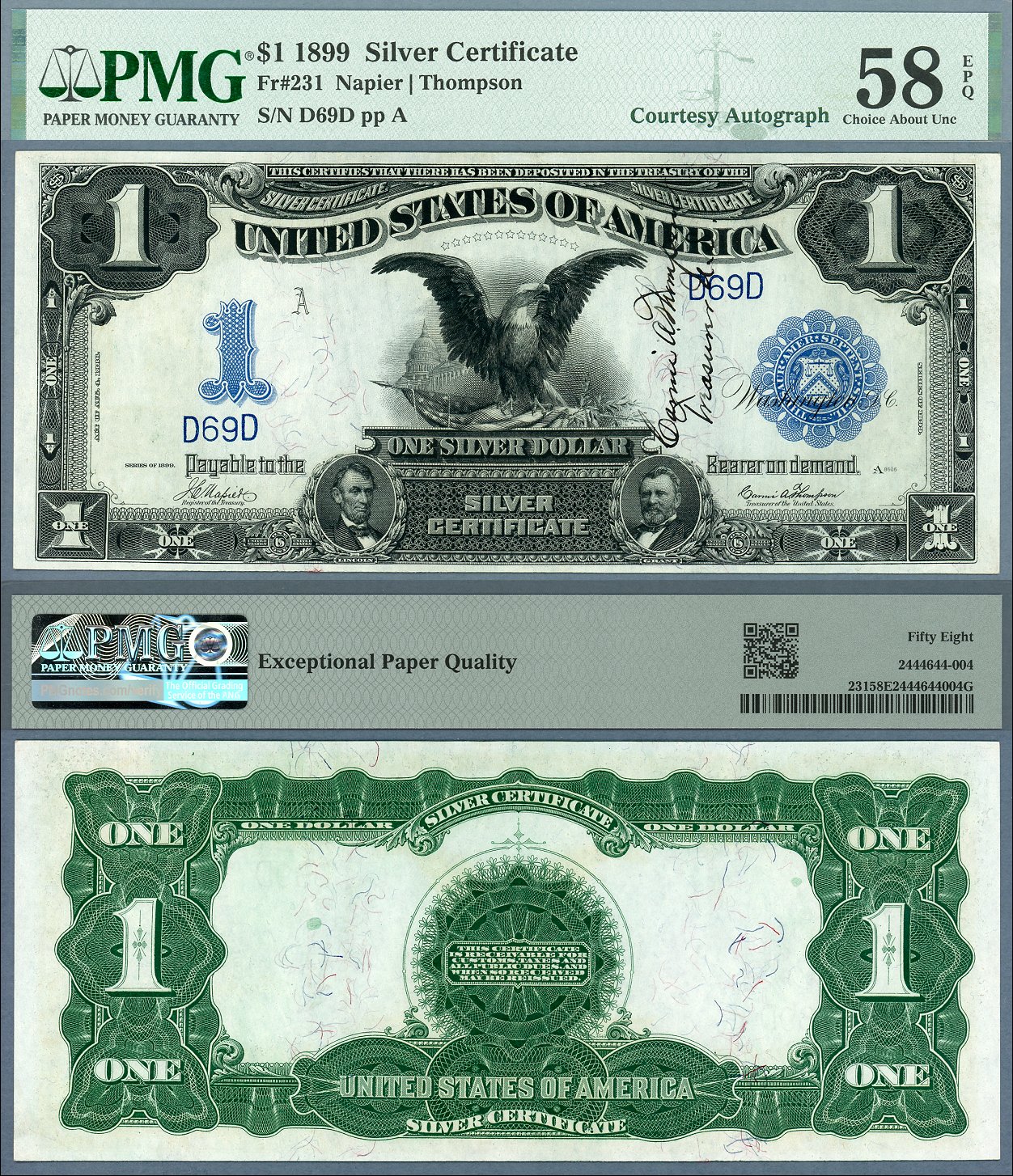
D69D This note is part of a cut sheet where each survivor is known to survive despite being scattered to the proverbial winds at auction in years and decades past. Part of the McLaughlin Collection of Napier-Thompson Notes. Only 236 Known in the Census This one looks like it grades much higher.
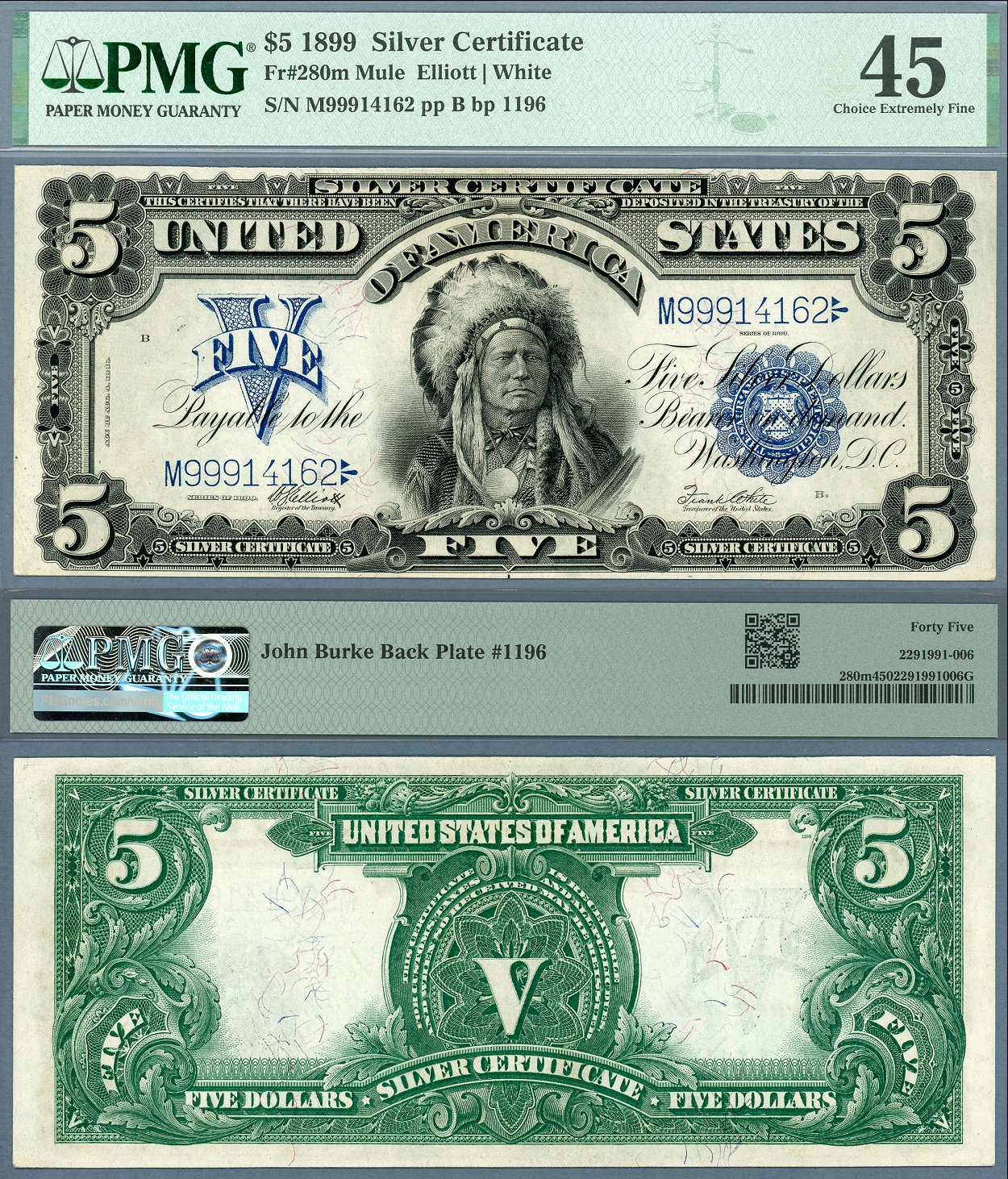
S/N M99914162 One of the most popular Large Size Type notes displays the portrait of Ta-to-ka-in-yan-ka also known as Chief Running Antelope. He was the chief of the Oncpapa or Huncpapa Tribe of the Sioux Nation. George F. Smille, who engraved many of our most beautiful pieces of currency, engraved the portrait and requested the Chief wear his war bonnet. He refused, deeming it inappropriate, so a war bonnet from the opposing Pawnee Nation was substituted in the engraved portrait. This $5 silver certificate is the only piece of US paper money issued for general circulation that uses a Native American as the central vignette.
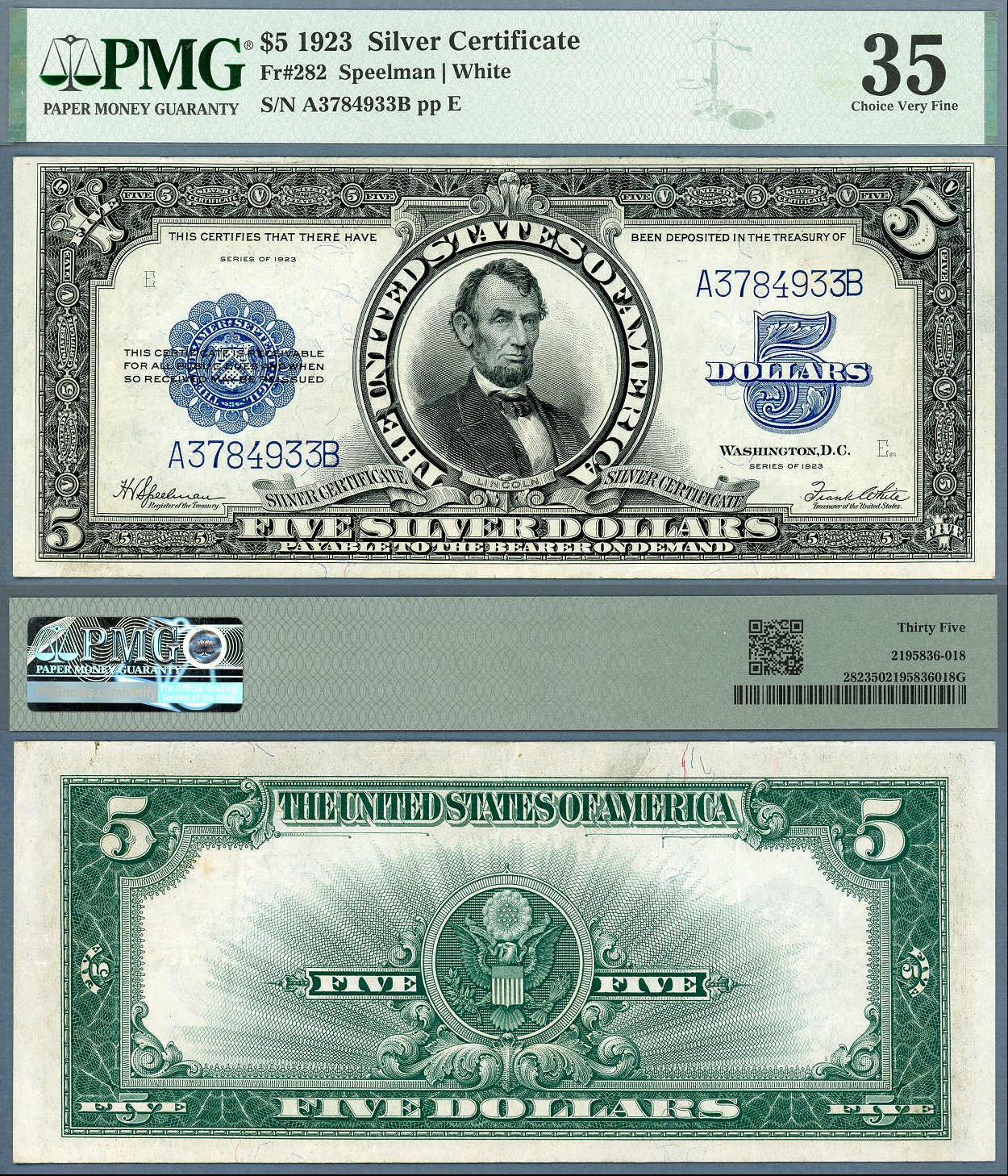
S/N A3784933B The last issue of Large Size Silver Certificates printed by the United States were dated Series of 1923. Only $1 and $5 denominations were issued. The $5 note popularly called the Lincoln Porthole features our 16th President, Abraham Lincoln, framed inside a circle. The portrait of Lincoln was based on a photograph by Anthony Berger, and engraved by Charles Burt. Though simple and stark in appearance, this note has gained popularity among the collecting public as one of the most desired of all currency types. The major design on the face is the vignette of Lincoln. Four distinct numerals are used on each corner, unlike the previous issue of 1899, which used four identical numerals. Blue serial numbers, seal and an additional blue numeral 5 are the only other designs on the face. The back of the note, printed in the usual green ink, displays the obverse of the Great Seal of the United States with rays emanating away from it. There is only one signature combination for this note, that of Speelman and White.
